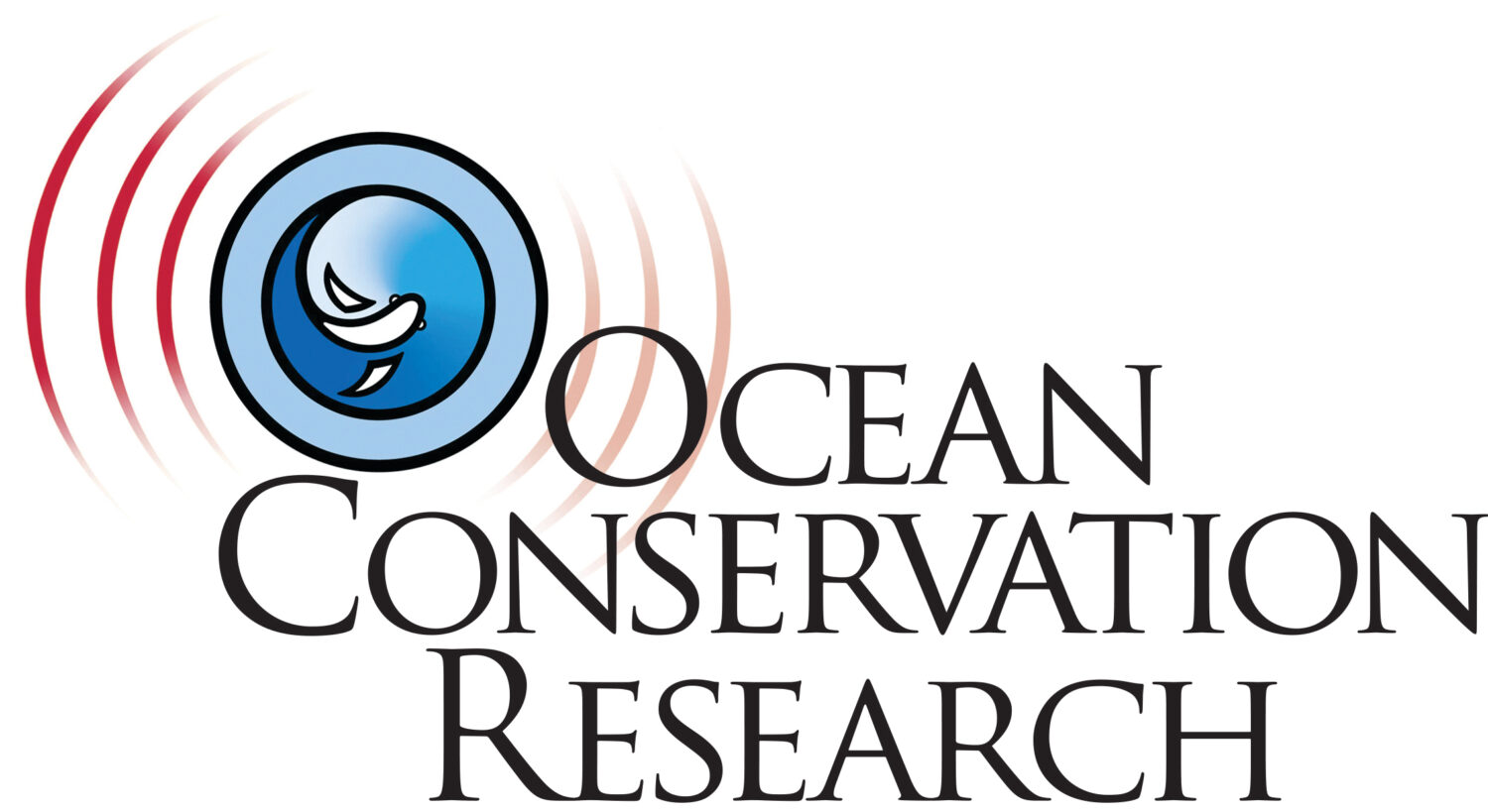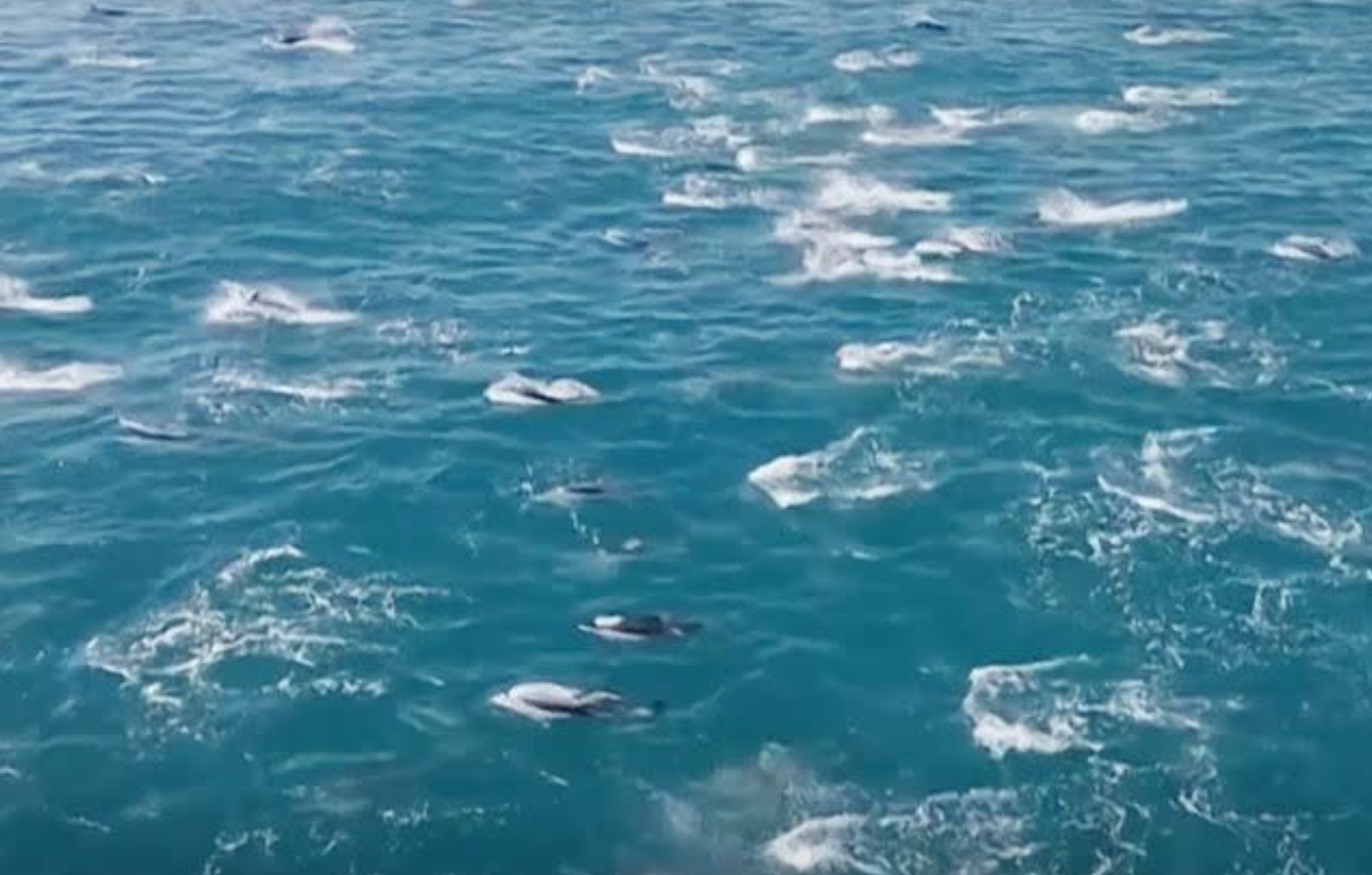Nature remains miraculous and mysterious. This week a “super pod” of dolphins was captured (on video) in Monterey Bay. Large aggregations of dolphins occur and are occasionally witnessed when they are in coastal waters amongst vessel traffic. The press estimate was between 2000 and 3000 animals.
What I found curious about the super pod was that it included white-sided and northern right whale dolphins. This sort of makes sense. They’re about the same size, and they prey on the same food. It’s nice they are compatible. Dolphins can get mean with much smaller harbor porpoises (mean dolphins – whooda thunk?).
But there must be something else going on with the dolphins aside from a similar size and a shared cuisine. In the Monterey Bay case the boat captain didn’t mention that the pod was in the midst of a commensurately large aggregation schooling fishes. From the videos, it seems like they were all heading somewhere.
I’ve seen similar aggregations between San Diego and the Coronado Islands when I was a pup. We would fish for bonita and yellowtail off the islands, and once, on the way to our fishing grounds, we found ourselves in a stunningly large aggregation of common dolphins.
They also seemed like they were heading somewhere, and could be seen to the extents of our surrounding horizon. Given that due to the curvature of the earth, the ocean horizon line from standing on the deck of a small boat is about 4 miles (6.4km), we were in the midst a helluva lot of dolphins.
It was not long after that that I heard that large aggregations of dolphins often cruise above equally large aggregations of tuna (perhaps a missed opportunity for us!). But this setup creates a commercial tuna fishing problem. The fishers locate the tuna by sighting in on the dolphin aggregations, and in turn, the dolphins get captured in the fisher’s nets. This has accounted for millions of dolphins perishing in the nets of the tuna fishers.
There are “Dolphin Safe” practices that address this problem, although I don’t know the details. Nonetheless the global tuna fishery has been the cause for the extirpation of stunning numbers of dolphins over the years – and why these large aggregations are not as common as they were when I was a kid.
Temporal note:
If you haven’t noticed, we are in extraordinary times. Many of the handles that OCR uses to inform sensible conservation governance and regulations are being ground up and splattered. I probably don’t need to detail herein, as many of our subscribers are subject to the same “ideological chainsaw.”
I am concerned about our colleagues at NOAA Fisheries, BOEM, and the Marne Mammal Commission; but also the scientists and academics who have heretofore been supported by my tax dollars through the various Federal research funding agencies to do fantastic things.
OCR has a National Fish and Wildlife Foundation grant proposal, which if honored, could set our sails for the next few years, or if canned, could shift us to taking kids out on boats to “learn about the sea” until… well, your guess is as good as mine.
My council for all of us is to not internalize the chaos. This is part of their strategy. We all have work to do, and will not be as effective if we fall for the ruse or submit to their bullying. Once the storm and chainsaws move along, we’ll have a lot of catching up to do.
Godspeed.

